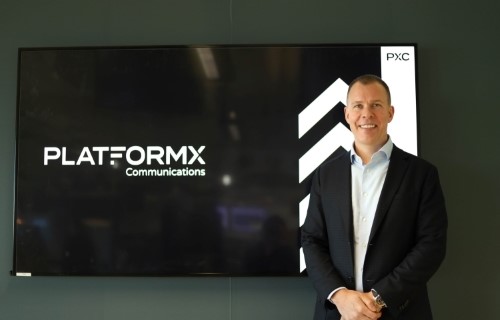Connectivity for all.

TalkTalk Group believes that simple, affordable, reliable and fair connectivity should be available to everyone. Since entering the market in the early 2000s, we have a proud history as an innovative challenger brand.
-

TalkTalk
Visit TalkTalk’s consumer websiteOur aim has always been to offer more choice and better value for consumers — and we don’t just talk the talk, we walk the walk, too.
-

PlatformX Communications
Visit PXC’s websitePlatformX Communications (PXC) is the UK’s leading wholesale provider of innovative solutions for connectivity, voice, cloud and security underpinned by the UK’s most robust, secure, resilient and reliable network.
MEET THE LEADERSHIP TEAM
Sir Charles Dunstone set up Carphone Warehouse in 1989 aged 25 after he began his business career selling mobile phones out of his flat in Marylebone. Charles led Carphone Warehouse’s expansion across the UK and beyond and in November 2002, acquired Opal Telecom, providing the opportunity to launch a cost effective, residential, fixed line service to customers.

TalkTalk was launched as a subsidiary of Carphone in 2003 with the unique service proposition that all customers talk to each other for free, forever – our first big disruption to the industry. He led the demerger and subsequent listing of TalkTalk from Carphone in 2010, and remains a major investor following the take-private in 2020.
Through his investment vehicle, Freston Ventures, Charles invests alongside others in disruptive start-ups across a variety of sectors, including the online estate agency Strike, and food brands Five Guys and Chicken Shop.
In 2012, Sir Charles Dunstone received a Knighthood for services to the telecommunications industry and his charitable work. In 2015 he was appointed Commander of the Royal Victorian Order (CVO) for his work with The Prince’s Trust. Charles' charitable trust, the Dunstone Educational Trust, is the main sponsor of the Fulwood Academy school in Preston, Lancashire.
James has been Chief Executive Officer of TalkTalk Group and PXC since September 2024. Prior to that, he was Chief Financial Officer of both companies, having joined in April 2023.
Before TalkTalk, he spent nine years as CFO at the FTSE 250 listed Capricorn Energy, and prior to that had an extensive career in investment banking at Rothschild and Merrill Lynch.
He has significant experience in strategic transformation, capital markets, mergers and acquisitions, and has worked in the telecoms, energy and infrastructure sectors.
.
Tom became Executive Chairman of PXC in September 2024, focusing on client relationships and strategic direction. He joined TalkTalk in March 2022 on the acquisition of Virtual1, one of the largest wholesale providers in the UK B2B market, which he founded in 2007.
He first connected Virtual1 with TalkTalk’s Wholesale Services business, and then its network and security arm, creating PXC, of which he was CEO until August 2024. Tom has more than 20 years’ experience in the telecoms industry, having worked for leading global telecommunication providers both in the UK and the USA before founding Virtual1.

.
Susie joined TalkTalk in 2022, having first been Group Product, Data & Analytics Director, and a member of the Group executive committee, before becoming Chief Strategy Officer for TalkTalk consumer. She was appointed CEO, TalkTalk, in March 2024, as the consumer business began trading as a separated entity from PXC, TalkTalk Group’s network business.

Susie is an experienced CEO, having previously run YouView, TalkTalk’s TV joint venture, alongside shareholders BT, BBC, ITV, Channel 4 and Channel 5. Prior to that, Susie was a strategy lead at the BBC across technology, commercial and partnerships.